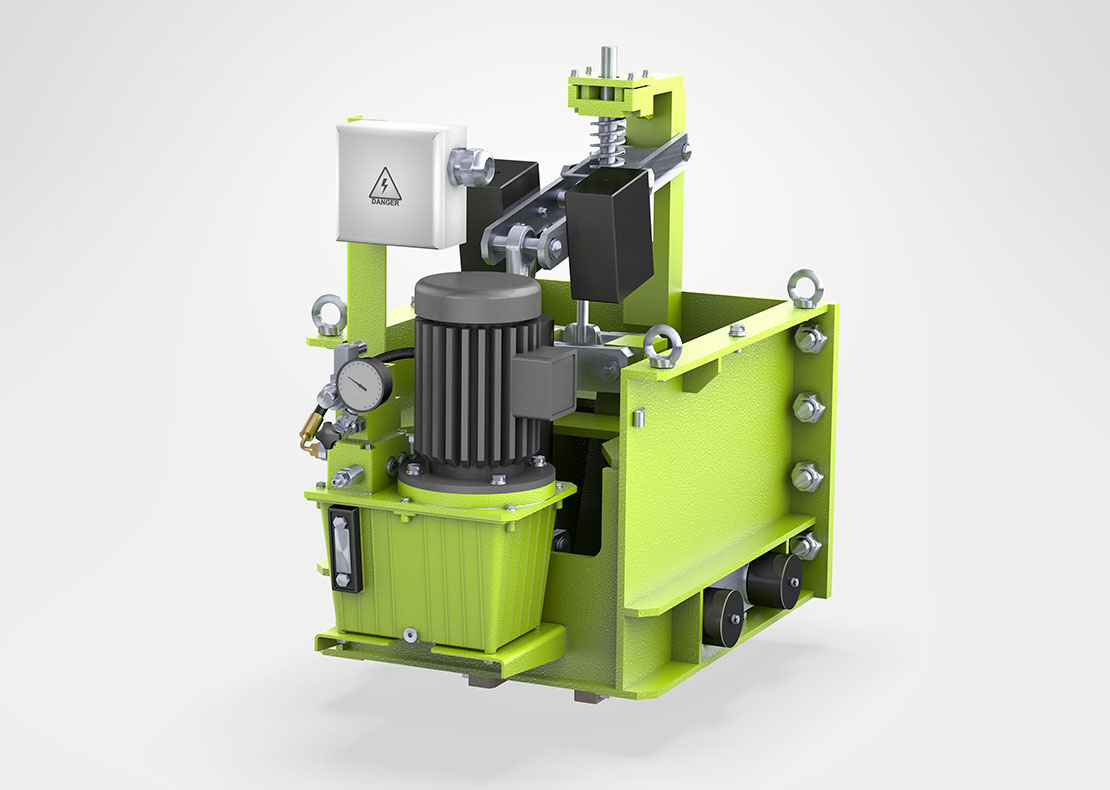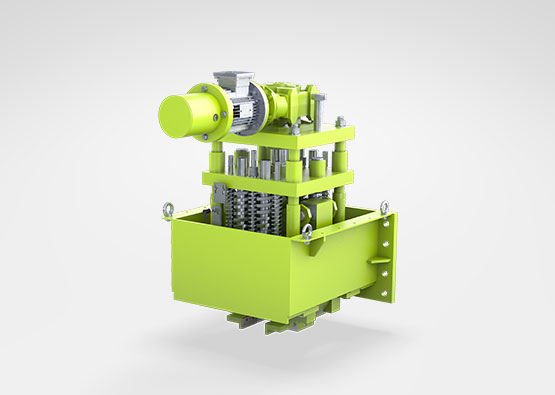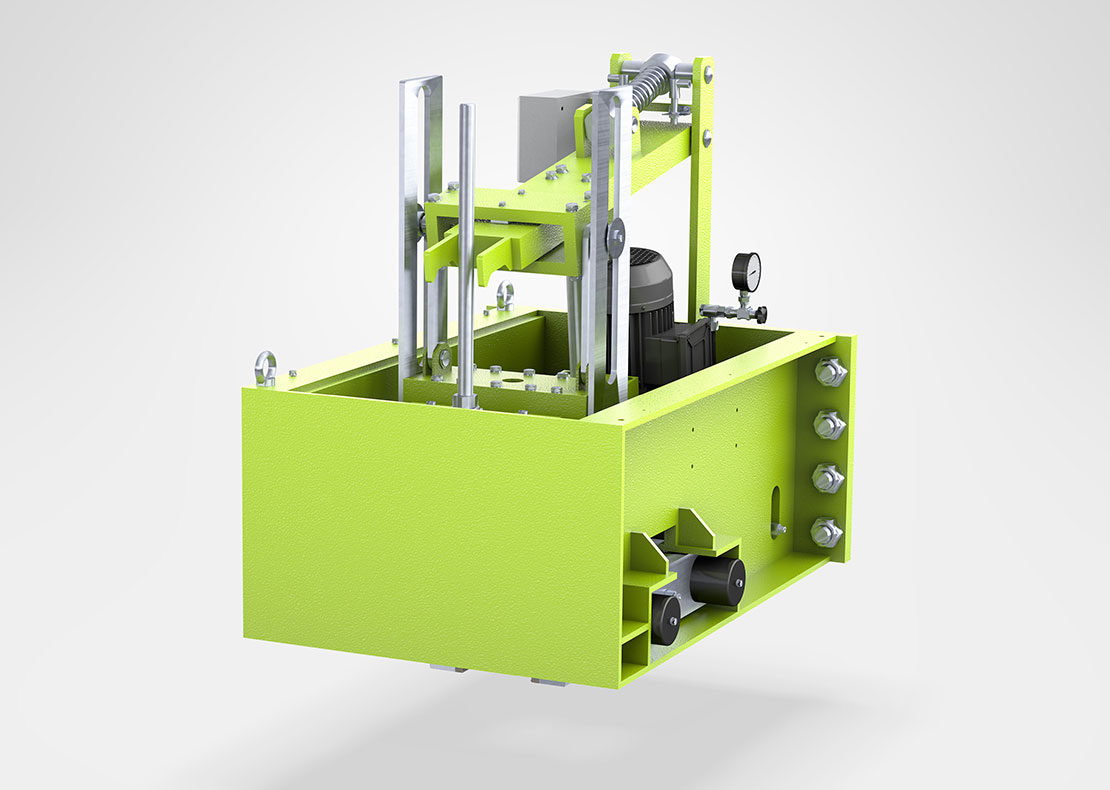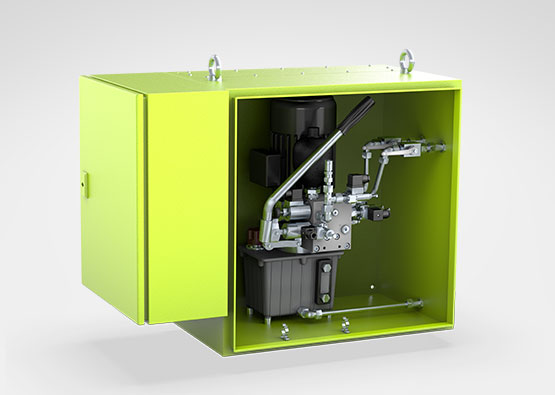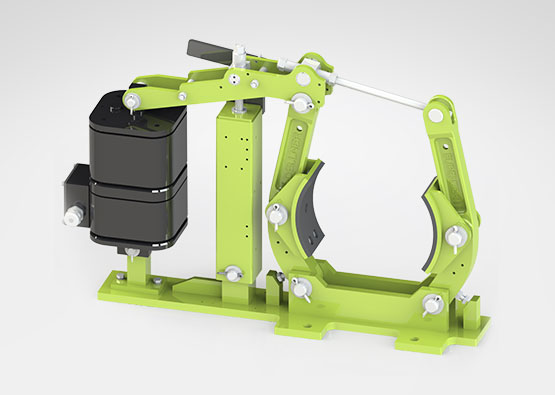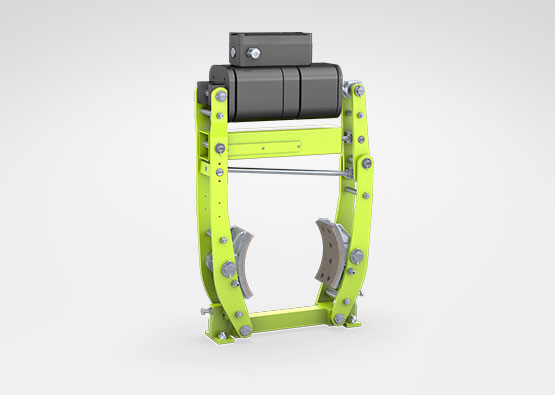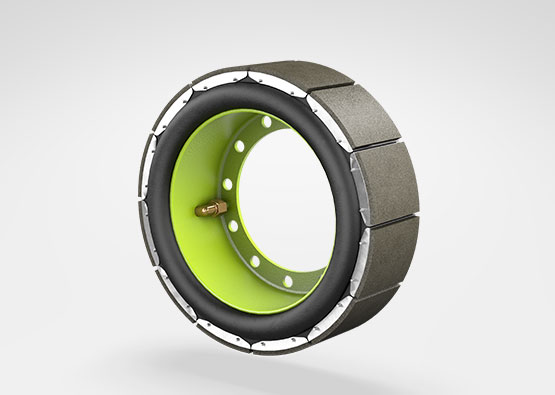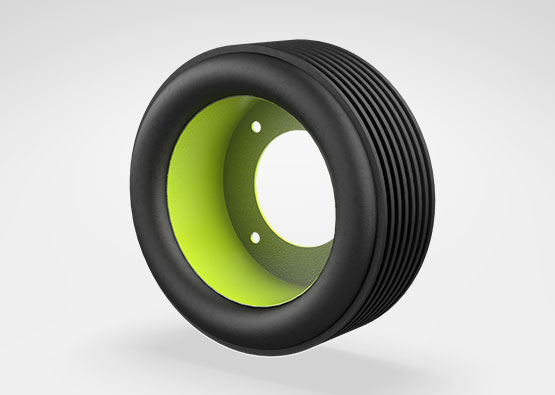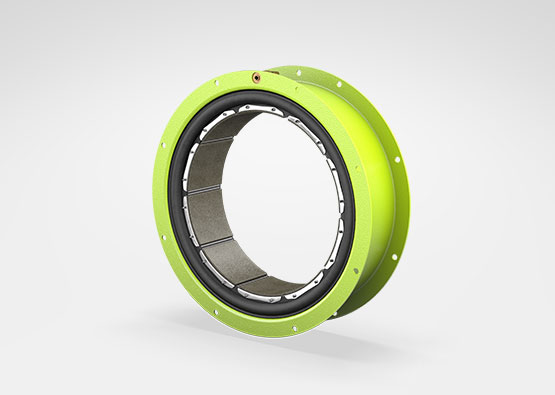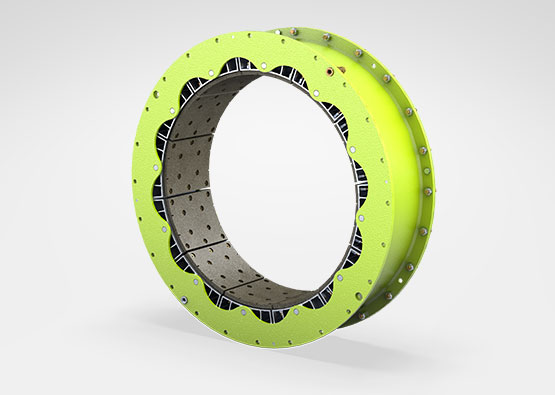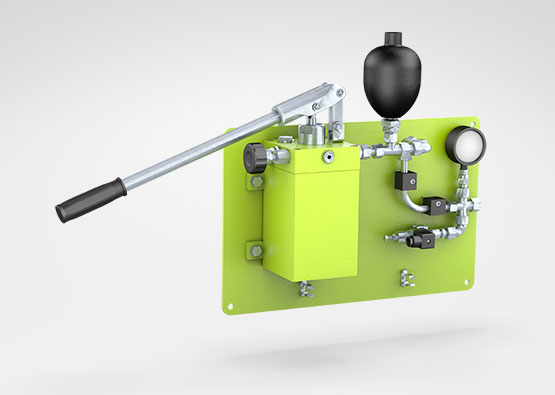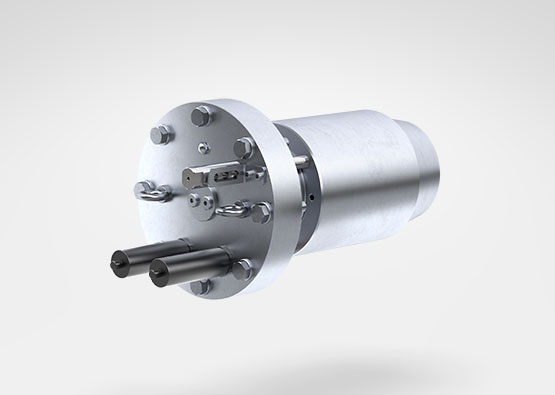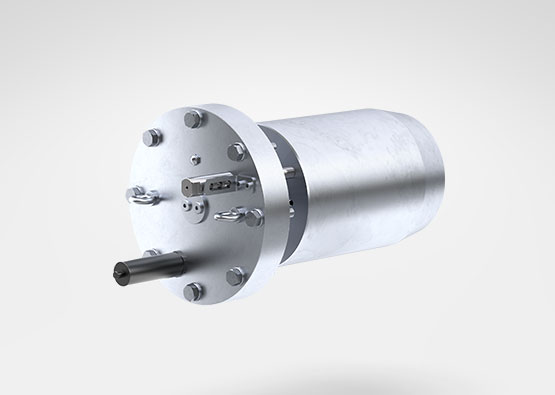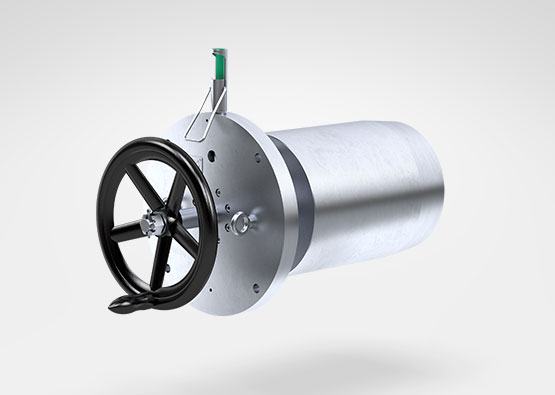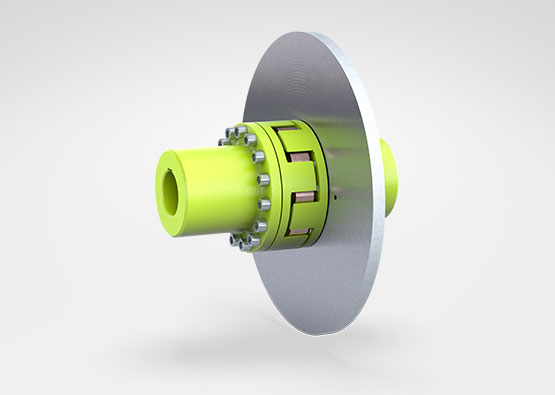BSC
- Torque:
- Contact Force:
- 50 kN
Depending on contact pressure, coefficient of friction and brake disc diameter
The high capacity of these brakes makes them particularly suitable as service- or secondary emergency brakes e.g. on hoists, slewing drives and belt conveyors. Other applications are in material handling, mechanical engineering and wind turbine industry, where high holding forces are required independent of the direction of rotation within limited space.
- Two identical caliper halves, ready for operation, with spring packs set to nominal force
- Up to 1 mm air gap between brake pad and disc
- Easy, manual pad wear compensation
- Sintered linings
- Proximity switch release control
- Proximity switch wear control
- Complete piped supports for one or more calipers
- Hydraulic power units or BUEL® G
- Special seals for flameproof fluids
- Cleaning pads
- Brake discs
Additional PRODUCTS
- All
- Caliper / Disc Brakes
- Components & Accessories
- Couplings
- Drum & Band Brakes
- Hydraulic Systems
- Locking Devices
- Monitoring & Control Systems
- Motor Mounted Brakes
- Pneumatic Drum Clutches & Brakes
- Stop Turn Lock Systems
- Storm Brakes (Rail & Wheel Brakes)
- Thruster / BUEL®
- Wind Turbine Components
- WPT Disc Clutches & Brakes
These rail clamps are storm brakes suitable for high forces. They are self-blocking type; in case a force acts on the crane and tends to put the same into motion, they press on the rail sideways.
These rail clamps are storm brakes static suitable for small to medium forces. They are spring actuated; the spring exercise the closing force while a group composed by electric motor, gear reducer and a ball screw provides the opening.
These rail clamps are storm brakes suitable for high forces. They are self-blocking type; in case a force acts on the crane and tends to put the same into motion, they press on the rail sideways.
The DH hydraulic power packs deliver pressure up to 200 bar and can be delivered with optional hydraulic cabinets and electrical terminal boxes.
The EBA is a powerful drum brake with braking torques from 24 (ft-lb) to 9000 (ft-lb) that meets AISE (TR11) & NEMA (ICS 8) standards.
The EBH series is designed according to DIN 15435. This design is very compact and can be used in tight motor gearbox combinations.
The EBN series is designed according to DIN 15435 and has been in use in various industries for decades. EBN-2St modification: the drum brakes solution for Bridges and Sluice Systems
The FKE is best suited for applications with light starting and stopping loads. It is also commonly used as a slip clutch or tension brake within light horsepower and torque applications.
The FKR is often referred to as a coupling, as its expanding neoprene rubber facing engages the interior diameter of the drum directly. The resulting friction generates significant torque within a small package.
The FK is well suited as a clutch or brake for a variety of high speed and low to medium torque power transmission applications where high heat generation is not a factor.
The FKT is well suited for applications with the most demanding equipment where severe clutching and braking is required.
The FM is designed and manufactured for marine applications, mainly for use on diesel-driven reduction gears.
Our hand pump can be used to simply activate the Dellner brake calipers. It also acts as a back up system for the primary pressure supply system.
The hydraulic rotary actuator is a device which transform hydraulic power (pressure and flow) in mechanical power: torque and angular speed.
A hydraulic rotor lock offering up to 250 bar pressure with an activation time of 60 seconds.
We offer three models of the JHS-RLH-240 hydraulic rotor lock – the GL Type Certified JHS-RLH-240, the JHS-RLM-240 and the JHS-RLH-240-154. All these locks deliver up to 250 bar pressure with an activation time of just 35 seconds.
Manually activated rotor lock used for safety purposes during maintenance operations to stop the rotor mechanically. The maximum lateral force is 6400 N and the standard stroke is 95 mm. Other strokes are available upon request.
These couplings are for use in application with high dynamic loads. Damping of peak torques and vibrations as well as electrical insulation between motor and gearbox are further reasons for the use of this coupling type.


